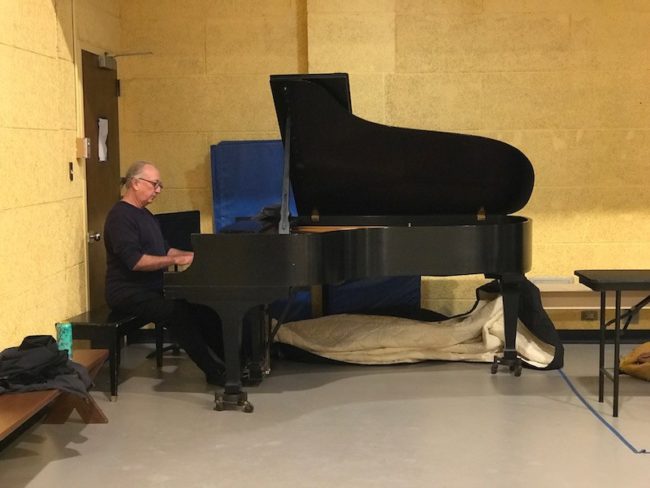Dancers use their bodies as their instrument to create art, and music is often the muse to their movement. Ed Smith has been providing live music as an accompanist for dance majors for approximately 30 years. He is a constant source of inspiration for students who have the privilege of moving to his music.
Students have been moved to tears on multiple occasions from his playing. Senior dance major Molly Kate Dalton appreciates the emotion Smith elicits in class.
“He has a way of creating music that takes me to another place and allows me to explore different ideas and dynamics in movements,” Dalton said. “I’m so thankful I have the pleasure of dancing to his music every semester at SMU.”
Before he became a skilled accompanist, Smith made a name for himself on the vibraphone. He is still a celebrated name in the field, and instrument manufacturer Malletech even produces Smith’s signature vibe mallets.
Smith improvises entire 80-minute dance classes. Instead of playing the same rhythms repeatedly, he mixes it up to keep the dancers on their toes. Smith said he excels in this method of accompaniment thanks to his vast experience in jazz music.
“I feel more at home in modern class versus ballet because of my improvisational skills,” Smith said. “I also feel like I am trying to help you guys out, in colors and rhythms in the music, hitting accents and phrasing.”
Smith’s efforts to provide new, exciting musical inspiration for the dancers, his hard work, and his dedication to the division do not go unnoticed.
“He is active in his search for new musical material for the dance classes,” said Myra Woodruff, a modern dance technique professor. “He doesn’t just play the same thing for ten years. He goes into the studio on his own time and finds new material and ideas.”
Woodruff specializes in the Graham technique, a specific branch of modern dance that utilizes unconventional musical phrase lengths. She urges students to listen to Smith’s purposeful playing and to let it affect their dancing.
“He becomes one in his musical ideas with what the dancers are dancing,” Woodruff said. “Much of the time, his choice of music helps the dancers to find the inner life of the movement through what they are hearing.”









